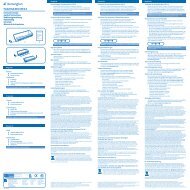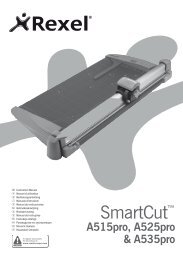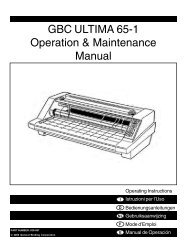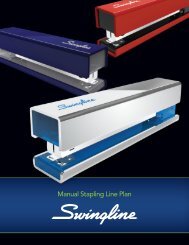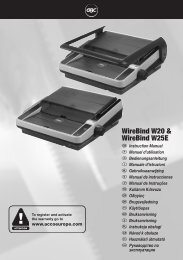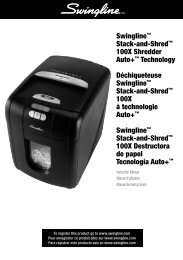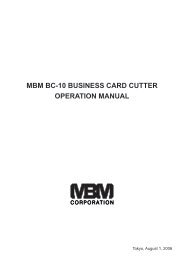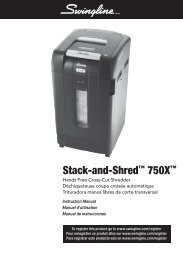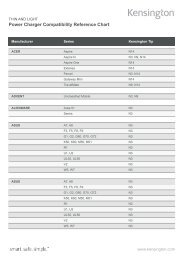Create successful ePaper yourself
Turn your PDF publications into a flip-book with our unique Google optimized e-Paper software.
<strong>GBC</strong> <strong>1264WF</strong>/<strong>1244WF</strong>Operation ManualSPEED / TEMPERATURE CONTROLThis is only a general reference guide. Different settings may be suitable as the warm up time, lamination time and materialschange.Factors that may affect the speed and temperature parameters;1. Image length2. Image width and ink coverage.3. Ink coverage4. Paper type5. Laminate thickness6. Operating environment7. Condition of the rollers8. Line voltage (effects heaters)9. Using cooling features.You may have to adjust temperature or speed depending on stock finish, thickness *Turn heat off when not in use.THE ART OF LAMINATIONBASIC RULESDo not attempt to laminate abrasive or metal Objects such as staples, paper clips and glitter, as they may damage theheat or pull rollers.Do not force items into the nip area of the heat rollers. An item that is not easily drawn into the laminator by the heatrollers is probably too thick to laminate.Wrinkles may result if an attempt is made to reposition an item once it has been grasped by the heat rollers.Do not stop the laminator before an item has completely exited the pull rollers. Even a momentary stop will cause amark (heat line) on the laminated item.Good, consistent lamination is a result of combining proper heat, tension and dwell time. Dwell time is controlled by the speed ofthe motor and is defined as the amount of time the material to be laminated is compressed between the heat rollers.As a general rule, thicker items and film need to run at slower speeds because they extract more heat from the rollers at a quickerrate. Setting the speed control at slower settings gives the laminator longer dwell time thus allowing proper lamination of thickitems. Thinner items, such as standard copier paper (20 lb. bond) and tissue paper, extract less heat from the rollers and can berun at faster speeds.FILM TENSIONProper film tension, known as brake tension, is the minimum amount required to eliminate wrinkles in the finished item. The filmshould be taut. A properly adjusted roll of film should not require excessive force to turn by hand.Film tension should be enough to introduce a minor amount of drag as the film unrolls. Insufficient tension causes wrinkles,while too much tension causes stretching (necking). Uneven tensions between the top and bottom rolls create curl. Too muchupper tension creates upward curl while too much bottom tension causes downward curl.Adjustment of the pull roller clutch may be necessary if after adjusting unwind and rewind brake tensions do not improve youroutput quality.© 2006 General Binding Corporation Page 35



